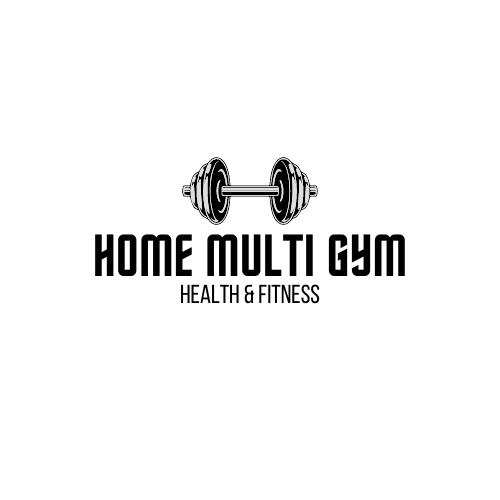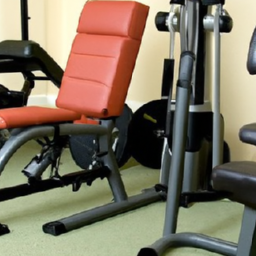If you’ve recently experienced an injury or undergone surgery, you may be wondering whether a home multi-gym can help with your rehabilitation. The answer is not a simple yes or no, as it depends on the specific nature of your injury or surgery and the guidance of your healthcare professional. In this article, we’ll explore the factors to consider when using a home multi-gym for rehabilitation and provide tips for using it safely and effectively. So, if you want to learn more about whether a home multi-gym can be a useful tool in your recovery journey, keep reading!
Introduction
If you’re recovering from an injury or surgery, you may be wondering if a home multi-gym is a suitable option for your rehabilitation. While it’s always important to consult with a healthcare professional before beginning any exercise program, a home multi-gym can offer several benefits for your recovery process. In this article, we will explore the various benefits of using a home multi-gym for rehabilitation, considerations before starting, exercise options for different injuries or surgeries, common misconceptions and concerns, alternative rehabilitation options, tips for using a home multi-gym, and success stories of individuals who have used a home multi-gym for their rehabilitation journey.
What is a home multi-gym?
A home multi-gym is a versatile piece of exercise equipment that allows you to perform a wide range of exercises in the comfort of your own home. It typically consists of a weight stack or resistance bands, adjustable seats and handles, and various attachments for targeting different muscle groups. With a home multi-gym, you can perform exercises for strength training, cardiovascular fitness, and even rehabilitation purposes.
Benefits of using a home multi-gym for rehabilitation
Convenience of exercising at home
One of the primary benefits of using a home multi-gym for rehabilitation is the convenience it offers. After an injury or surgery, traveling to a physical therapy clinic or rehabilitation center can be time-consuming and tiring. With a home multi-gym, you have the flexibility to exercise at any time that is convenient for you. This is particularly beneficial if you have mobility issues or are limited in your ability to travel.
Versatility of exercises
A home multi-gym provides a wide range of exercise options, making it suitable for rehabilitation purposes. You can target specific muscle groups or work on overall body strength depending on your unique needs. From leg extensions to chest presses, and lat pulldowns to bicep curls, a home multi-gym offers endless possibilities for rehabilitation exercises.
Progressive resistance training
Rehabilitation often requires a gradual increase in resistance to promote muscle strength and healing. A home multi-gym with an adjustable weight stack or resistance bands allows you to gradually progress your workouts as your strength improves. This progressive resistance training is crucial for the rehabilitation process, ensuring that you are continuously challenging your muscles without overexerting yourself.
Targeted muscle strengthening
Depending on your injury or surgery, you may need to focus on specific muscle groups for rehabilitation. A home multi-gym enables you to target these muscles directly, helping you regain strength and function in the affected area. Whether it’s strengthening the muscles around a joint replacement or building core stability after back surgery, a home multi-gym can be customized to meet your unique rehabilitation needs.
Considerations before using a home multi-gym for rehabilitation
Before incorporating a home multi-gym into your rehabilitation routine, there are several important considerations to keep in mind.
Consulting with a healthcare professional
It is crucial to consult with a healthcare professional, such as a physical therapist or orthopedic surgeon, before using a home multi-gym for rehabilitation. They can assess your injury or surgery, provide guidance on specific exercises to avoid, and recommend modifications to ensure your safety and optimal recovery. Only with their approval and guidance should you proceed with using a home multi-gym for your rehabilitation.
Understanding your injury or surgery
Having a thorough understanding of your injury or surgery is essential when using a home multi-gym for rehabilitation. Different injuries or surgeries may require different exercises and modifications, and it’s important to be aware of any restrictions or precautions you should take. Your healthcare professional can provide you with specific guidelines and recommendations based on your individual case.
Proper technique and form
Using a home multi-gym for rehabilitation requires proper technique and form to ensure both safety and effectiveness. Improper form can lead to further injury or impede your progress. It is advisable to seek guidance from a professional, such as a physical therapist, to learn the proper technique for each exercise and ensure you are performing them correctly.
Gradual progression and monitoring
Rehabilitation is a gradual process, and it is important to progress your exercises slowly and monitor your body’s response. Pushing yourself too hard or too quickly can hinder your recovery or lead to setbacks. Listen to your body and adjust your workouts accordingly. If you experience pain or discomfort during or after exercise, it’s a sign to modify or stop the activity and seek guidance from your healthcare professional.
Exercise options and modifications for different injuries or surgeries
A home multi-gym can be adaptable to various injuries or surgeries, providing exercise options and modifications to suit your specific needs. Here are some examples of how you can modify exercises for different types of injuries or surgeries:
Lower body injuries or surgeries
For lower body injuries or surgeries, exercises that focus on the upper body and core can be beneficial. This includes exercises such as seated chest presses, seated rows, tricep dips, and core exercises like planks or seated twists. These exercises help maintain overall body strength while allowing the lower body to recover.
Upper body injuries or surgeries
If you have an upper body injury or have undergone surgery in the upper body, lower body exercises can be a suitable option. This includes leg presses, calf raises, and squats. These exercises not only promote lower body strength but also help maintain cardiovascular fitness.
Joint replacements
Joint replacements often require specific exercises to ensure proper rehabilitation. Your healthcare professional may recommend exercises such as leg extensions, hamstring curls, shoulder presses, and lateral pull-downs to target the specific joint and surrounding muscles. It is important to follow their guidance closely to ensure a successful recovery.
Spine or back issues
For individuals with spine or back issues, a home multi-gym can provide exercises to strengthen the core and back muscles, promoting stability and relieving strain on the spine. Examples of exercises include seated rows, lat pulldowns, and back extensions. It is essential to use proper form and seek guidance from a healthcare professional to avoid exacerbating the existing condition.
Common misconceptions and concerns about using a home multi-gym
Despite the numerous benefits, using a home multi-gym for rehabilitation may raise some concerns or misconceptions. Let’s address a few of them:
Lack of professional supervision
One concern may be the lack of professional supervision compared to traditional rehabilitation settings. While it is true that using a home multi-gym does not provide direct supervision, consulting with a healthcare professional before starting your rehabilitation program can help mitigate this concern. They can provide guidance, monitor your progress remotely, and offer support and modifications as needed.
Safety concerns
Safety is a top priority when using a home multi-gym for rehabilitation. It is essential to fully understand how to use the equipment correctly, maintain proper technique and form, and start with low resistance or weight. Additionally, ensure that the equipment is properly set up and maintained for optimal safety. Regularly checking the cables, resistance systems, and attachments can help prevent accidents or injuries.
Effectiveness compared to traditional rehabilitation settings
Some may question the effectiveness of using a home multi-gym compared to traditional rehabilitation settings. While individual results may vary, a home multi-gym can be highly effective for rehabilitation when used properly. The convenience, versatility, and progressive resistance training it offers make it a beneficial tool for many individuals. However, it is important to remember that a home multi-gym is not a substitute for professional guidance and supervision, and it should always be used in conjunction with appropriate medical advice.
Alternative rehabilitation options
While a home multi-gym can be a suitable option for rehabilitation, it’s important to explore alternative options as well. Here are a few alternatives to consider:
Physical therapy clinics
Physical therapy clinics provide specialized care and expertise in rehabilitation. Working with a physical therapist can ensure a personalized treatment plan and ongoing guidance throughout your recovery journey. Physical therapy clinics offer a wide range of equipment and resources that may not be available at home.
Outpatient rehabilitation centers
Outpatient rehabilitation centers offer comprehensive rehabilitation services in a more structured environment. They provide access to a multidisciplinary team of healthcare professionals, including physical therapists, occupational therapists, and other specialists who can guide you through your recovery process. Outpatient centers often have a variety of equipment and resources specifically designed for rehabilitation purposes.
Sports medicine centers
Sports medicine centers focus on the diagnosis, treatment, and prevention of sports-related injuries. If your injury or surgery is sports-related, a sports medicine center can provide specialized care tailored to your needs. They offer a range of rehabilitation services, including access to equipment and expertise in sports-specific rehabilitation techniques.
Tips for using a home multi-gym for rehabilitation
If you decide to use a home multi-gym for rehabilitation, here are some tips to ensure a safe and effective experience:
Start with low resistance and intensity
When beginning your rehabilitation program, start with low resistance or weight and gradually increase as your strength improves. This gradual progression ensures that you challenge your muscles without risking injury or overexertion. Your healthcare professional can provide specific guidelines on the appropriate starting point for your individual case.
Warm-up and cool-down exercises
Before using the home multi-gym, it is important to warm up your muscles to prevent strains or injuries. Incorporate dynamic exercises, such as light cardio or stretching, to prepare your body for the workout. After the workout, cool down with static stretches to help reduce muscle soreness and promote flexibility.
Listen to your body’s signals
Pay attention to any pain or discomfort during or after exercise. Pain is your body’s way of signaling that something is not right, and it’s important to address it promptly. If you experience pain or discomfort, modify the exercise, reduce the resistance, or consult with your healthcare professional for further guidance.
Stay consistent with your exercise routine
Consistency is key when it comes to rehabilitation. Stick to a regular exercise routine and follow the recommendations provided by your healthcare professional. Consistency helps promote muscle strength, flexibility, and overall recovery. Set achievable goals and make exercise a priority in your daily routine.
Success stories of using a home multi-gym for rehabilitation
Using a home multi-gym for rehabilitation has proven to be successful for many individuals. Personal testimonials and case studies highlight the positive impact it can have on the recovery process. Individuals have reported improvements in strength, mobility, and overall wellbeing through consistent and targeted exercise with a home multi-gym. However, it is important to remember that each person’s journey is unique, and individual results may vary.
Conclusion
In conclusion, a home multi-gym can be a valuable tool for rehabilitation after an injury or surgery. It offers the convenience of exercising at home, the versatility of exercises, progressive resistance training, and targeted muscle strengthening. However, it is essential to consult with a healthcare professional, understand your injury or surgery, use proper technique and form, and progress gradually. Alternative rehabilitation options, such as physical therapy clinics, outpatient rehabilitation centers, and sports medicine centers, should also be considered. By combining a home multi-gym with professional guidance and proper care, you can support your recovery and reclaim your strength and mobility. So, if you’re wondering if you can use a home multi-gym for rehabilitation, the answer is yes, with the necessary precautions and guidance, it can be a useful tool on your journey to recovery.

